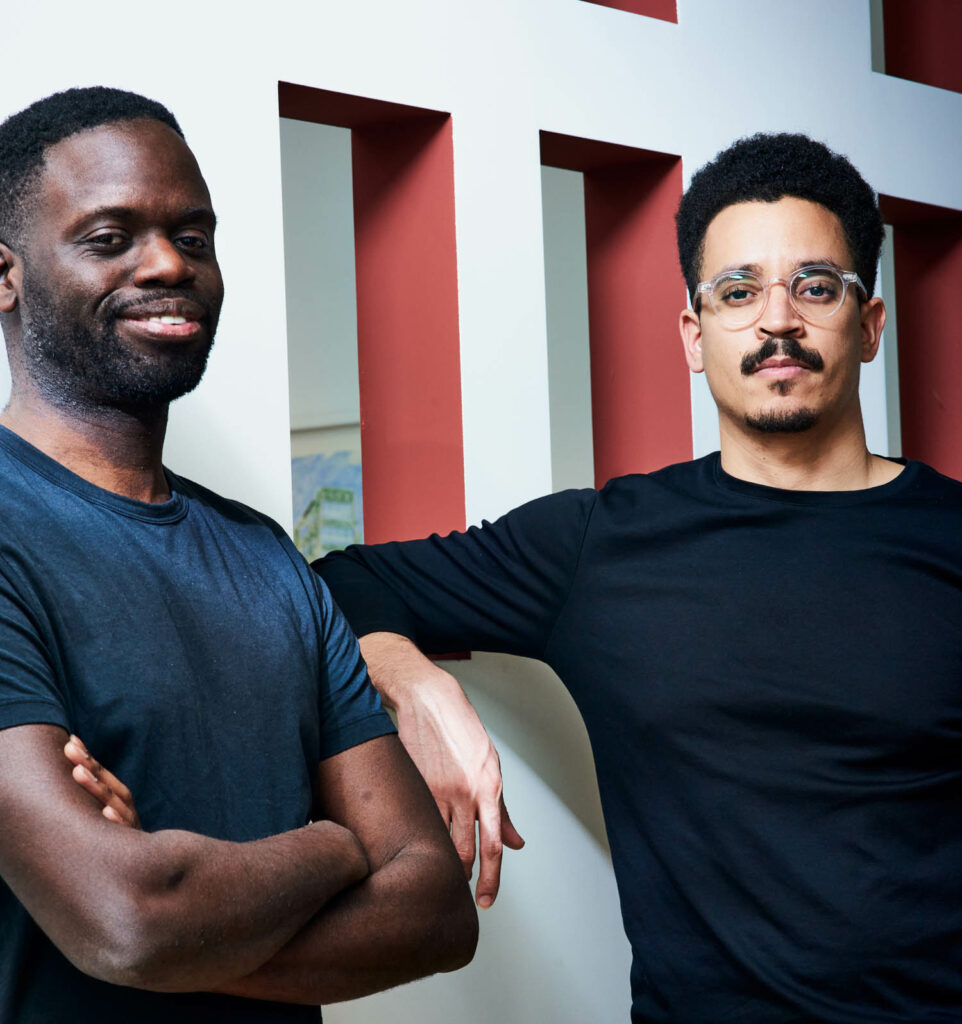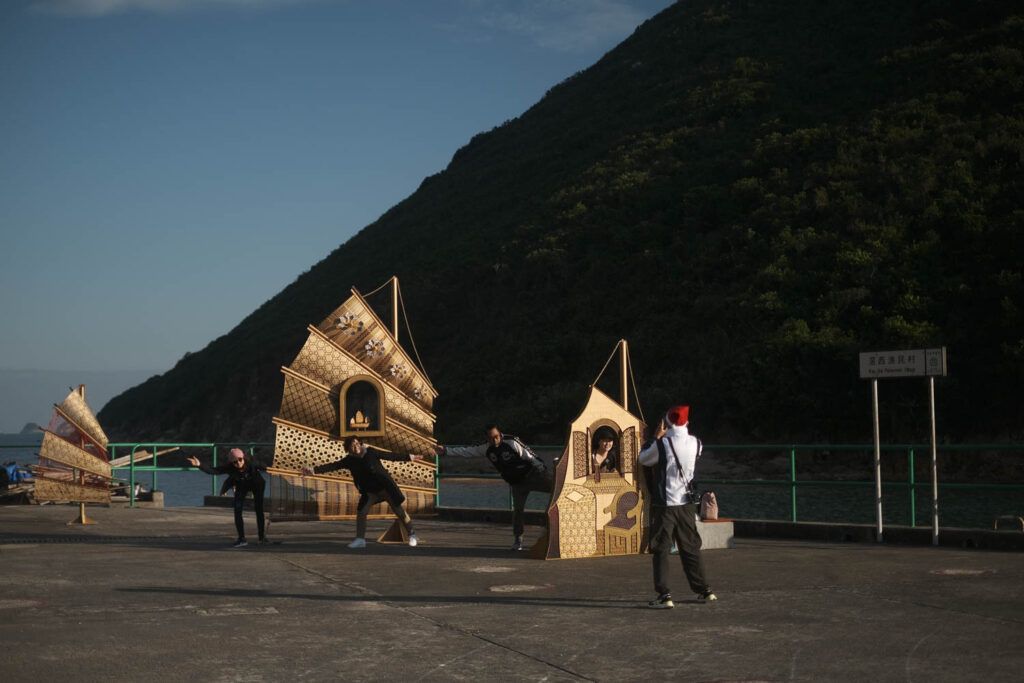
10 Questions With… Studio of Contemporary Architecture Founders
Recognizing the immense impact of design on culture and communities, Canadian architects Shane Laptiste and Tura Cousins Wilson teamed up to create their own practice with the aim of broadening the discourse. Known as SOCA, the Studio of Contemporary Architecture stands out for its versatility and investigations into community development in and beyond its Toronto locale. Projects range from residential to institutional spaces and more, all of which are a reflection of the founders’ experience.
With the belief that “architecture both shapes and is shaped by the contemporary condition,” Laptiste and Wilson continue to contribute to the dialogue regarding Canadian architecture and the way it is seen on the global scale. SOCA’s latest work is on view in “Magdalene Odundo: A Dialogue with Objects,” an exhibition at the city’s Gardiner Museum on the works of Magdalene Odundo, a Kenyan-British ceramicist. The exhibition, on view through April 21, offers insight into the introspection of gallery design with an immersive display. To create a healthy interaction between the audience and Odundo’s works in exhibit, the team at SOCA built a circular plinth that creates a rich ambiance for the room; the sort a museum deserves.
Here, the founders of SOCA reflect on their creative journey, upcoming works, and how they champion versatile architecture throughout Canada.


LEARN HOW SOCA CONTRIBUTES TO THE CANADIAN ARCHITECTURE DIALOGUE
Interior Design: How did you each get your start as architects?
Shane Laptiste: I was raised in Montreal and studied architecture at McGill University for both my undergraduate and master’s degrees. Following graduation, I worked in an Edmonton-based architecture firm for over 10 years, where I specialized in sports and recreation projects. Then I moved to Toronto and started my own practice.
Tura Cousins Wilson: I was raised in Toronto, attended Toronto Metropolitan University, and did my master’s degree at Delft University of Technology. I worked in a large Toronto-based architecture practice where I had the fortune to work on projects in a variety of sectors, particularly cultural and residential projects. I converted my grandmother’s house into my own family home, and that prompted me to start my own practice.
ID: How did SOCA come to exist?
SL: We met in 2017 through Black Architects and Interior Designers Association (BAIDA), a non profit organization we founded with colleagues looking to support mentorship, advocacy, and networking of Black architects and designers in Canada. Our first architectural collaboration was an open ideas design competition organized by the Ontario Association of Architects (OAA). We were interested in the diverse strip malls of Toronto’s older post-war suburbs, and our proposal critiqued the harsh environment of strip mall parking lots. We proposed an alternative where parking could coexist with mini parkettes to offer seating, vegetation, and beauty. We didn’t win the competition, but to our surprise, the COVID-19 pandemic occurred a couple years later and what we thought of as a far-fetched dream became a reality as businesses repurposed their parking spaces to expand their services and accommodate safe separation. We continued to collaborate on various projects, and this prompted us to formally unite as SOCA.
ID: At SOCA, do you have a philosophy and mission that shapes the work you do?
TCW: We don’t have a formal manifesto, however, we are taking a critical and intersectional approach to culture, heritage, urbanism, housing justice, climate justice, and their implications on the practice of architecture. We named our practice SOCA, an acronym for the Studio of Contemporary Architecture, out of a belief that architecture both shapes and is shaped by the contemporary condition. But it’s also a reference to the Soul of Calypso, better known as Soca—a fun nod to our Caribbean roots and its culture of commentary, color, and joy. We are interested in developing conversations beyond our home in Canada, applying a global lens to understand how culture and the environment influence inclusionary and beautiful design. Our process incorporates community engagement as both a design tool and an outcome. We approach each project as a contribution to the broader public discourse on contemporary concerns within the built environment.


ID: Could you share more about designing exhibition space for the Gardiner Museum?
TCW: We designed the Gardiner Museum’s new exhibition “Magdalene Odundo: A Dialogue with Objects.” This is the largest exhibition of the celebrated Kenyan-British ceramicist in North America. The installation features more than 20 works spanning Dame Magdalene Odundo’s career, displayed alongside objects selected by the artist from the Gardiner Museum’s permanent collection, and works on loan from major Toronto museums and private collections. These objects span geographies, time periods, and media bringing her work into conversation with objects as diverse as an ancient Cycladic marble figurine, a Ndebele apron from South Africa, and a painting by the late Trinidadian-Canadian artist Denyse Thomasos.
Gardiner Museum chief curator and deputy director, Sequoia Miller, requested an atmosphere that would dramatically showcase Odundo’s work but not upstage it. As a British and Kenyan woman, Odundo has deep roots in both modern and traditional, and European and African ceramic practices. We took her ambiguities as a starting point, transforming the Gardiner’s “white cube” into a “clay cube.” Treating the walls with a textured limewash paint, and creating broken circular plinths from dark plaster, SOCA picked up on the forms, textures, warmth and even the metallic quality of Odundo’s carbonized vessels to establish a rich ambiance. The plinths obscure a chronological trajectory through the space, and the low lighting encourages each visitor to pursue their own quiet journey of close examination and contemplation.


ID: What was it like creating something unique that served as a support for Odundo’s work?
SL: It’s a bit like being an in-the-pocket drummer, where you hold a solid groove and even though you may throw in some accented fills, you’re never soloing or upstaging the frontwoman. Our goal was to let Magdalene’s work speak for itself by creating a solid and sexy rhythm section. The spotlight was for her, but when you eventually tune in on the drummer you think: Damn, this drummer’s tight!
ID: Could you share some insights into the work you do at SOCA?
SL: We like to mix things up. We see both fun and value in working at different scales and on different typologies. We collaborate with clients and other creatives in the institutional, non-profit, residential, arts, commercial, and municipal sectors, working on projects that include new construction, adaptive reuse, renovations, additions, and interior design. Our work also extends from exhibition design and public art to building feasibility studies. Our practice is deeply engaged in research and conceptual design with the understanding that speculative thinking can inform our built projects while also adding to the broader architectural discourse. All our projects are points of reflection and inform one another in various ways.
ID: Did you make a deliberate decision to pursue a project in a museum as a means to explore your artistic visions?
SL: Working in an art space was more natural than coincidental or deliberate. We have been collaborating with artists from the beginning of our practice, so we’ve always felt connected to the art world. It’s also not dissimilar from architecture in that you’re creating space through formal gestures and exploring light and materiality. One key difference is that building permits and other approvals aren’t required, which provides a refreshing sense of design liberty.




ID: Do you approach architecture from a cultural perspective, too?
TCW: We view architecture as a tangible manifestation of society’s collective aspirations and shortcomings. So the practice and thinking of architecture is very much a cultural endeavor for us. Our work, at its core, is rooted in the culture of a place or site. Sometimes that may mean digging up overlooked cultures or challenging dominant or accepted cultural narratives. Culture is such an interesting way to frame it because it can mean so many ideas and starting points for investigation. For example, we have looked at vernacular building methods as culture, walkable cities as culture, density as culture, black communities as culture, inclusivity as culture, materiality as a culture, and so on.
ID: Would you say there is a sort of activism in how you approach architecture?
TCW: Our speculative projects—including plans for Little Jamaica, Alexandra Park, and the St. Lawrence Centre for the Arts is certainly activism. We also see teaching as a way of both raising awareness, honing ideas, and activating the next generation of architects. Shane currently teaches a design studio at McGill University and Tura at Toronto Metropolitan University. As mentioned, we are founding members of BAIDA, an organization mandated to increase a diverse representation of designers and architects in Canada—a cause we’re deeply committed to furthering. Every building responds to the world in a particular way.
Architecture has the potential, though not always acknowledged, to be deliberate and to take a stance in the ways in which it addresses its users, context, and environment. A word we often use as a practice is “push.” We push ourselves to be critical. We push our clients to question their assumptions and design briefs, and push our colleagues who in turn push us. You could say we’re intentional about where we as architects have influence.
ID: What are some of your key projects?
TCW: In addition to the Odundo exhibition, we recently completed the Fisher Field Clubhouse, which is a soccer clubhouse and park pavilion featuring accessible washrooms and team change rooms in Collingwood Ontario. In partnership with Black Urbanism TO Inc. and Open Architecture Collaborative Canada, we co-authored A Black Business Conversation, which outlined a future vision for Little Jamaica, Toronto’s largest Caribbean neighborhood, to address issues of affordability, new development, and other challenges.
We recently designed a speculative proposal for the St. Lawrence Centre for the Arts in Toronto that illustrates how a contemporary arts institution could reimagine and reposition itself without purging its Modernist past. There is also our Alexandra Park master plan, which is a counter proposal and written piece, questioning the current master plan’s approach to demolishing the majority of the existing housing and instead proposed a way in which the community could be revitalized without large-scale demolition of buildings and verdant landscape.



read more
DesignWire
10 Questions With… Sarah Mui
One Bite design director and cofounder Sarah Mui reveals how art and design can spark meaningful dialogue.
DesignWire
10 Questions With… Painter Daniel Rich
North Carolina and Berlin-based painter Daniel Rich shares the details behind his geometric interiors and what he sees inside architectural forms.
DesignWire
Behind the Mic: Get to Know Jeremiah Brent
What does Jeremiah Brent, interior designer and host of the Ideas of Order podcast, have to say about home? It turns out, quite a lot.


